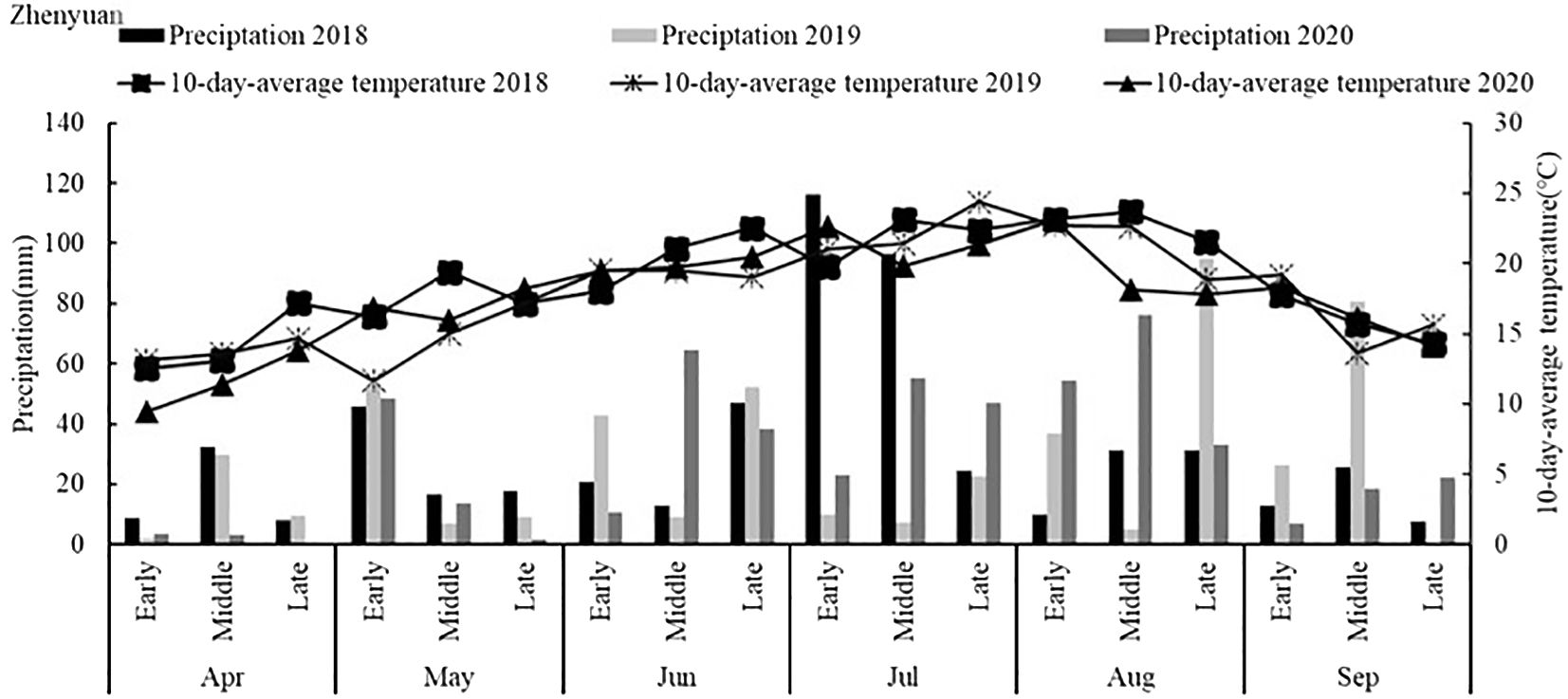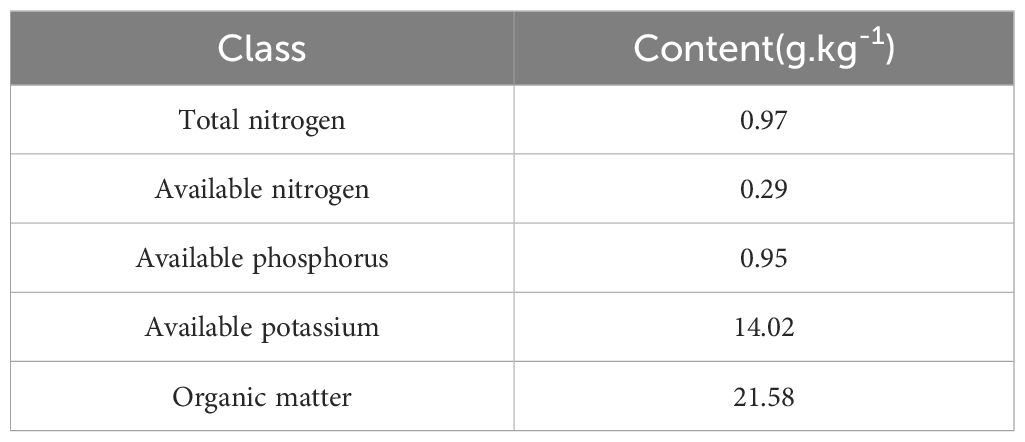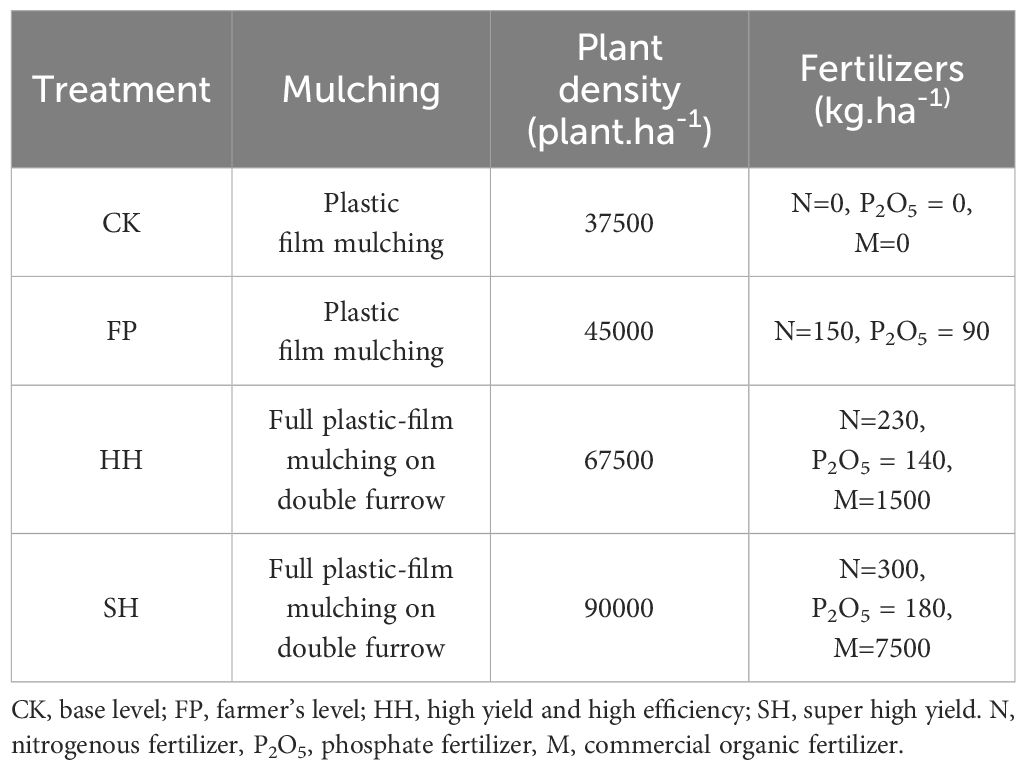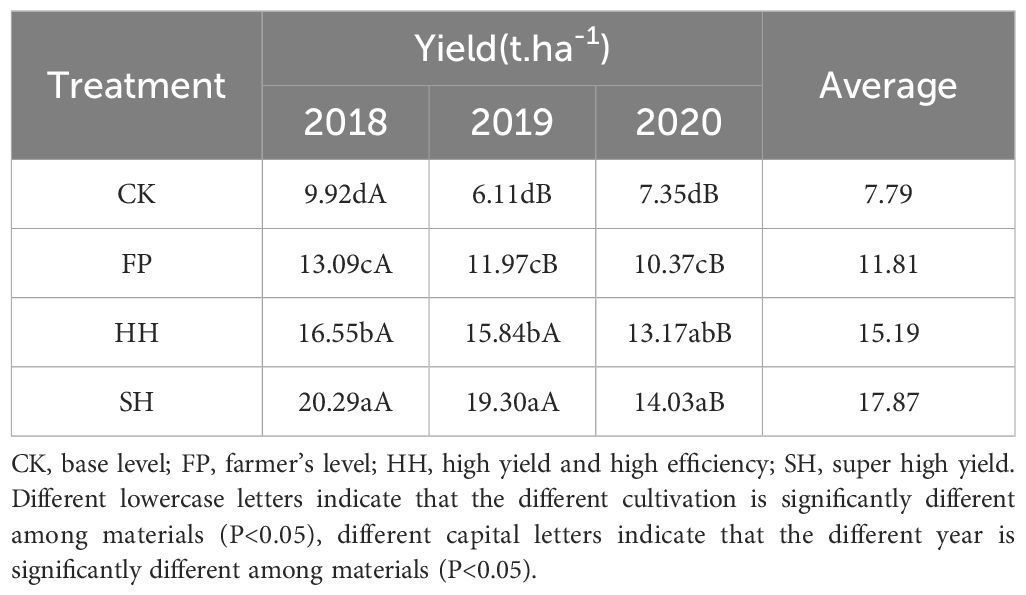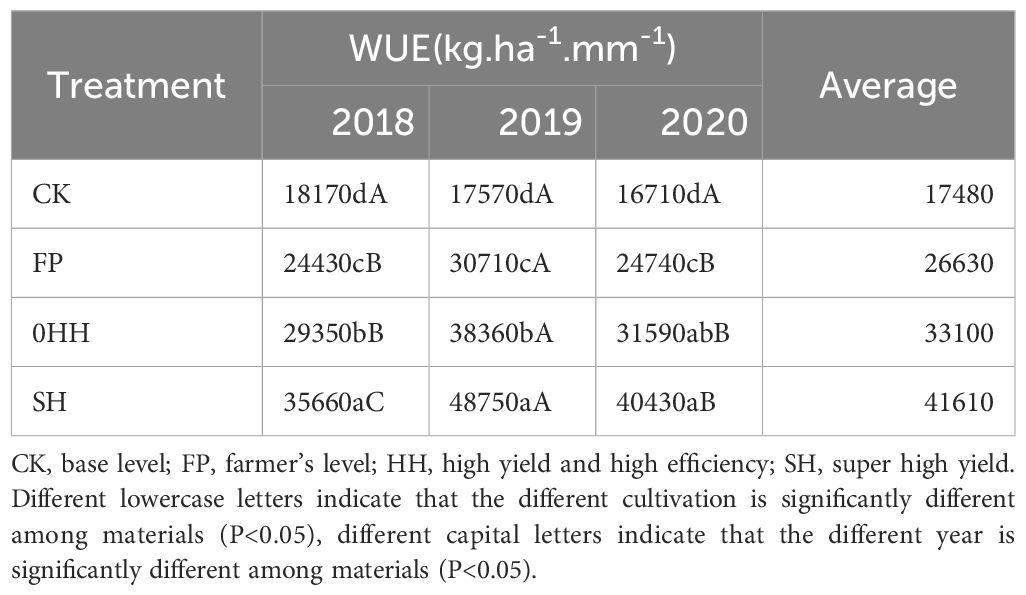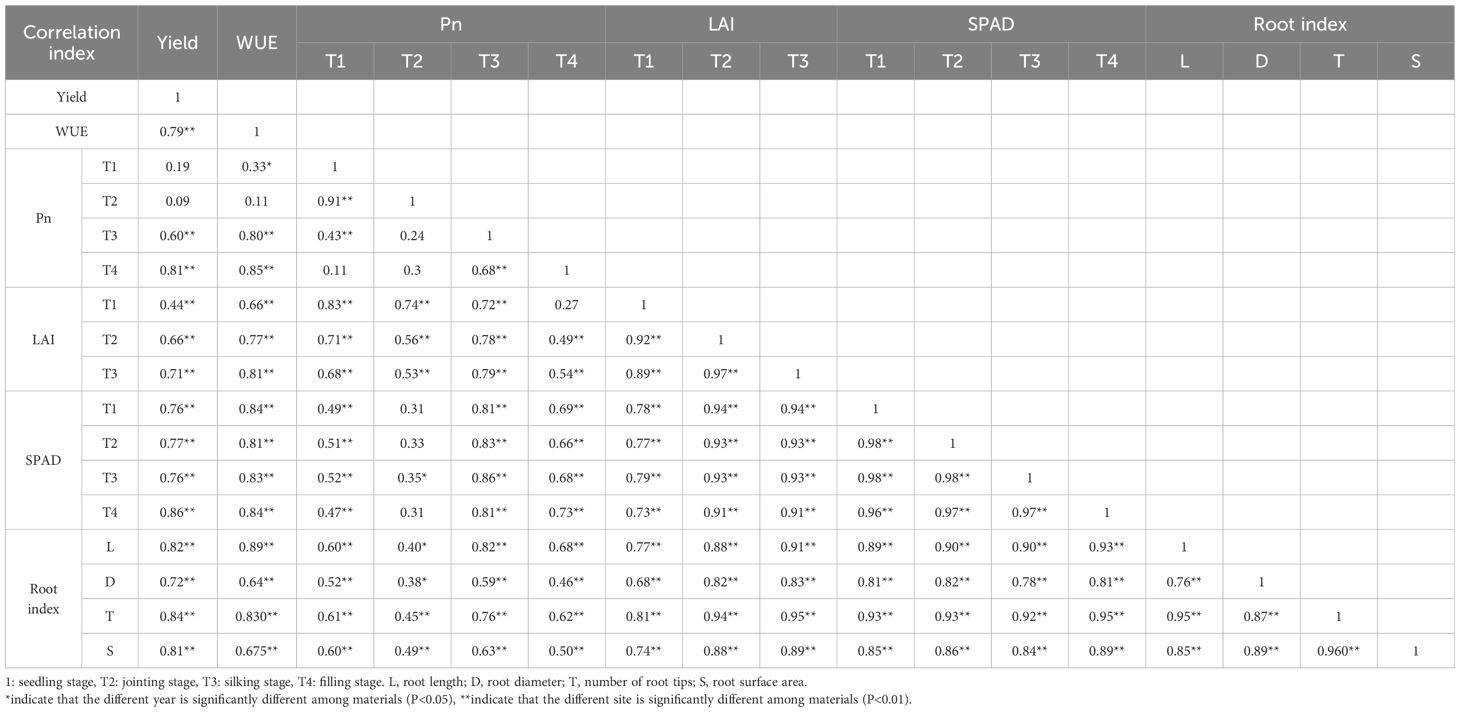- 1Institute of Dryland, Gansu Academy of Agricultural Sciences, Lanzhou, China
- 2Key Laboratory of High Water Utilization on Dryland of Gansu Province, Lanzhou, China
- 3Key Laboratory of Low-carbon Green Agriculture in Northwestern China, Ministry of Agriculture and Rural Affairs, Lanzhou, China
- 4The Jiont Key Laboratory of Ministry of Agriculture and Rural Affairs-Gansu Province for Crop Drought Resistance, Yield Increment and Rainwater Efficient Utilization on Rain-fed Area, Lanzhou, China
- 5Gansu Academy of Agricultural Sciences, Lanzhou, China
Introduction: Improving photosynthetic use efficiency in dryland agroecosystems to sustain high agricultural yields is a key responsibility for ensuring food security.
Methods: This study was conducted in the regions on the semiarid Loess Plateau of China during 2018–2020. Dryland maize of Xianyu 335 comprised four modes: basic yield input (CK, plastic film mulching, 37500 plant.ha-1 of plant density and unfertilized), farmer input (FP, plastic film mulching, 45000 plant.ha-1 of plant density and inorganic nitrogen(N) and phosphate(P) fertilizer were 150kg.ha-1 and 90kg.ha-1), high yield and high-efficiency input (HH, full plastic-film mulching on double furrow, 67500 plant.ha-1 of plant density and N, P and organic manure(M) fertilizer were 230kg.ha-1, 140kg.ha-1 and 1500kg.ha-1), and super high yield input (SH, full plastic-film mulching on double furrow, 9000 plant.ha-1 of plant density and N, P and organic M fertilizer were 300kg.ha-1, 180kg.ha-1 and 7500kg.ha-1). The effects of different cultivation modes on yield, WUE, net photosynthetic rate(Pn), leaf area index(LAI), chlorophyll index(SPAD value) and root index were studied.
Results: The results showed that the value average of yield and WUE for CK were 7790kg and 17480kg.ha-1 in three years. SH, HH and FP cultivation modes of yield and WUE was significant higher compared with CK cultivation mode (P<0.05). SH, HH and FP cultivation modes of yield and WUE increased by 34.01%, 48.68%, 56.39% and 34.34%, 47.99%, 57.99%, compared than CK cultivation mode. These differences were observed during the seedling stage, jointing stage, silking stage and filling stage. Year to year variation in performance of applied treatment, this improved in CK cultivation mode significantly enhanced SPAD value, Pn, LAI and the root index than SH, HH and FP cultivation modes. The yield exhibited a positive correlation with the WUE, SPAD value, Pn, LAI. The SH cultivation mode was the highest yields.
Discussion: The results indicated that maize yield and WUE could be increased through integrating and optimizing cultivation techniques in maize production on the semiarid western Loess Plateau of China. The SH cultivation mode was the highest yields. The primary factor contributing to the increase in yield and WUE of maize due to increased density, increased fertilizer and covering measures is the augmentation of Pn, LAI, SPAD value, and root index.
1 Introduction
The largest cultivation area and yield of all crops worldwide is produced by maize (Zea mays L.) (Zhao, 2022). Globally, more than 197 million hectares of maize-producing land are cultivate worldwide, over yielding 1.13 billion tons of maize (Queenta et al., 2022). A total area of 42.42 million ha of maize are cultivated in China with yield of approximately 259.23 million tons per year (Ramadan et al., 2021). Maize has been widely cultivated in recent years on the semiarid western Loess Plateau of China (Xu and Zhang, 2017). The progression of urbanization has resulted in a dearth of cultivable land and water resources, while the widespread application of fertilizers and pesticides has contributed to the deterioration of soil quality and a reduction in grain output. Concurrently, population growth has engendered anthropogenic environmental degradation, while climate change has given rise to extreme temperatures, including both frigid winters and scorching summers. Moreover, the occurrence of late spring frost has engendered a trend of decelerating or even stagnant growth rates in maize production across global nations. The growth rate of maize production can’t catch up with the demand of population, energy and feed, and the global food production and security are facing great challenges (Barrret, 2010). A previous study on maize high yields showed that increased yields required adequate water and fertilizer, high yielding varieties and tolerant varieties, high planting densities, and reasonable cultivation measures (Wang et al., 2020). Therefore, maize variety and innovate cultivation techniques have become effective ways to increase the maize yield per unit area in the context of the rigid demand for maize yield, the reduction of cultivated land and water shortage in China (Zi et al., 2022).
There exist several strategies for enhancing maize yields, including denser planting, precise management of water and fertilizer, and adoption of specific planting techniques (Wu et al., 2015; Raza et al., 2021). WUE increased linearly as yield increased on the Loess Plateau under the different mulching and tillage practices. As the population reaches a certain threshold, inter-individual competition intensifies, leading to the development of a constrained canopy environment that hampers the attainment of maize’s yield potential. The selection of appropriate varieties, consideration of climatic conditions, and implementation of suitable cropping practices all play a crucial role in influencing light availability, field microclimate, and other factors that collectively enhance the photosynthetic performance of the maize population, thereby augmenting its yield (Xu et al., 2020). The growth and distribution of roots within the soil profile are significantly influenced by both soil moisture levels and genetic factors. Research has shown that regular irrigation promotes root development in the upper layers of soil, while dry conditions encourage deeper root growth. Additionally, soil management techniques such as tillage, sowing, and the incorporation of organic matter into the soil have been found to enhance root proliferation, as indicated by an increase in root length density (Benjamin and Nielsen, 2006. Schulze et al., 1996. Aggarwal and Sharma, 2002. Aggarwal and Goswami, 2003). The effect of different cultivation patterns from different root length and root diameter. Plant density at the right level contributes to an increased stand LAI, improved solar radiation utilization, and improved maize yields and WUE (Jia et al., 2018). The Leaf SPAD value was utilized as a metric for assessing leaf chlorophyll content and exhibited a strong correlation with leaf photosynthetic characteristics. The SPAD readings of rice leaves exhibited variability across three distinct stages of leaf development: initial growth, peak functionality, and senescence (Xu et al., 2019). SPAD readings and normalized SPAD values are positively correlated with maize yield (Yuan et al., 2016). Light affects many aspects of plant growth and development, not only supplies an energy source for photosynthesis, but also acts regulatory signal that controls plant development. The amount of light exposure can vary significantly due to differences in the population structure of the plants, resulting in significant differences in the photosynthetic efficiency of the leaves. Pn is directly related the amount of organic matter accumulated, thus impact yield (Barrret, 2010). The root system of maize plays a vital role in the processes of absorption, synthesis, fixation, and support (Qi et al., 2014). The growth and development of this system directly influence the maize plant’s capacity to absorb and utilize water and nutrients, ultimately impacting the production of plant dry matter and maize yield formation (Qi et al., 2012). Through the analysis of yield and LAI of spring maize in different cultivation modes, the LAI of the high-density, organic fertilizer and nitrogen fertilizer transport tillage two-by-two (T4) cultivation mode was significantly higher than that of the low-density, no-fertilizer rotary-tillage equidistant row spacing (T1) cultivation mode (Wang et al., 2020). Currently, a significant approach to enhancing maize yield and optimizing resource utilization is through the regulation of the maize root system’s growth, which promotes the uptake and efficient utilization of water and nutrient. It has been demonstrated that rational fertilization practices can effectively modulate root growth (Ren et al., 2017). Additionally, Liu Shengqun et al. discovered a significant positive relationship between root dry weight and variables including green leaf area, above-ground dry weight, and seed yield (Liu et al., 2007).
Previous studies have been limited to maize population structure and photosynthetic performance, and there have been fewer studies on the effects of different cultivation modes on spring maize yield and root development the Northern Loess Plateau. Hence, this experimental site has been established to explore various cultivation modes, primarily focusing on increasing density and optimizing fertilizers and mulching, based on an investigation of the prevailing planting practices among farmers in the Northern region. The objective of this study is to analyze the impact of various cultivation modes on the development of spring maize yields and the efficiency of photosynthetic utilization. This analysis is conducted through a comparative examination of Pn, LAI, SPAD value, and changes in root index on the Northern Loess Plateau. The findings of this research aim to offer theoretical foundations and technical guidance for the enhancement of high-yield maize cultivation.
2 Materials and methods
2.1 Experimental site and design
The experiment was conducted in Shangxiao Town, Zhenyuan County, Qingyang City (107.2′ E, 35°68′N, 1295m above sea level) situated in Gansu Province, China, during the period of 2018 to 2020. The soil types observed were dark loessial soil. The average annual precipitation recorded was 510mm during the year 2018. Based on the data depicted in Figure 1, the annual precipitation was documented as 646.0mm. Throughout the growth phase, Zhenyuan experienced a rainfall of 575.8mm in 2019. Zhenyuan encountered rainfall quantities of 587.5mm in 2020. It is noteworthy that the precipitation in 2018 exceeded that of both 2019 and 2020. Additionally, the average temperature during the growth period for corn cultivation, which spans from April to September, exhibited a gradual decline from 2018 to 2020. Specifically, the average temperatures were recorded as 20.17 °C, 19.45 °C, and 19.43°C for the respective years. The chemical properties of the test site soil are presented in Table 1 (Zhang et al., 2023).
These treatments, namely SH, HH, FP and CK differed in terms of cover methods, planting densities, and fertilizer management. With the exception of the CK treatment, all other treatments received uniform application of N, P, K, and organic fertilizer prior to land preparation and film covering. No additional fertilizer was introduced throughout the entire growth period. Field management adhered to practices employed in high-yield fields. Sowing was conducted using the full film double ridge furrow method, employing a polyethylene membrane with a width of 0.7mm and thickness of 0.01mm. The experimental plot consisted of a row measuring 5m in length, with line spacing of 0.75m and plant spacing of 0.30m. The planting density was 75000 plants per hectare. All seedlings were managed under the general field management methods. Four treatments were applied, and each was repeated 3 times. Effective accumulated temperature, growth length and photosynthetically active radiation can be found in Table 2. Detailed information regarding each treatment can be found in Table 3. Each year, all treatments received a basal application in the form of triple superphosphate (16% P2O5), N(100% N) and M (100% M). N and P were obtained STANLEY. M of (N + P2O5 + K2O ≥ 5%; organic content ≥ 45%)) was obtained HONGYUAN.
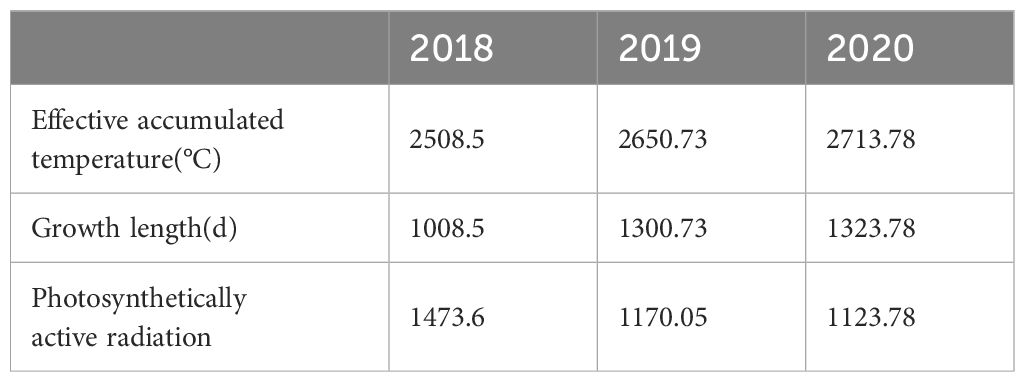
Table 3. Mulching, planting density, and fertilizer management of different cultivation modes treatment.
No potassium fertilizer(K) was added. The experiment involved testing four treatments within the same plot, all of which had uniform fertility. The experiment had four treatments each consisted three replications. The experiment encompassed a substantial area of 225m2. The experiment utilized the spring maize variety of Xianyu 335, which exhibited robust stress resistance and consistent yield stability. Maize was planted in late April and harvested in late September. No irrigation throughout the entire growth period of maize.
2.2 Sampling and measurements
2.2.1 Measurement of yield
Four maize rows in each treatment plot were selected as consistent growth. A total of three 5.5m2 corn ears were collected from each treatment and threshed to calculate the yield in the maturity stage.
2.2.2 Measurement of WUE
WUE = Economic yield of crops(kg.ha-1)/Total water consumption during the crop growth period (mm).
2.2.3 Measurement of LAI
Thirty leaves near the functional leaves were randomly selected for each treatment, and were measured with a crop leaf morphometer (TPYX-A, Hangzhou, China) in the seedling stage, jointing stage, silking stage and filling stage, and the data were recorded, and the process was carried out for five times in total.
2.2.4 Measurement of Pn
The experiment was conducted on a sunny day and measurements were taken at 10:00 to 11:00 am. Pnwas measured in maize during the field trial in2018–2020 at the Zhenyuan site. Measurements were made on healthy and fully expanded leaves of randomly chosen plants at different growth stages (seedling stage, jointing stage, silking stage and filling stage). The Pn was assessed with a portable photosynthesis system (LI-6800, LI-COR, NE, USA). Five readings were repeated for each leaf. When determining the indexes, it is necessary to avoid the main leaf veins and record the data after the system is stabilized. The light intensity and air temperature were determined in a natural environment, and the CO2 concentration was set at 400 μmol mol-1, and the CO2 concentrations in the sample and reference chambers were matched during the warm-up period of the instrument.
2.2.5 Measurement of SPAD values
The determination of leaf chlorophyll content was carried out in the morning from 9:00 to 11:00 a.m. For each treatment, 15 leaves were randomly selected near the functional leaves of plants with labels, and the SPAD values of the leaves were measured using a hand-held Top TYS-B Portable SPAD Chlorophyll Content Detector (TYS-B, Zhejiang, China), and the SPAD values of each leaf were measured three times and recorded randomly chosen plants at different growth stages (seedling stage, jointing stage, silking stage and filling stage). The values were recorded.
2.2.6 Measurement of root index
Roots of maize seedlings were taken and its were washed with water and the residual water on the surface was blotted with absorbent paper. The roots of maize plants were scanned with a root scanner (TD4800, Canada) and the pictures were saved, and the pictures of the roots were batch analyzed with the software Win RHIZO (Pro 2.0 Version 2005; Regent Instruments, Quebec, QC, Canada), which in turn yielded the length of the root system, surface area, number of root tips and volume, and other relevant indicators in the seedling stage.
2.3 Statistical analysis
The data were analyzed using SPSS software (version 21.0: IBM Corp., Armonk, NY, USA). The data was analyzed using a two-way analysis of variance with Duncan’s multiple-range test. A value of p< 0.05 was considered statistically significant, and a value of p < 0.01 was considered very significant. Origin 2021 (Origin Lab, Massachusetts) software was used to draw graphs. The tables and graphics were created using Excel 2019.
3 Results
3.1 Effect of different cultivation modes on maize yield
The yield was significantly different from different cultivation modes (P < 0.05). The yield order of the different cultivation modes was SH>HH>FP>CK, and the data of the 3-year field trial showed the same trends (Table 4). Maize yield was significantly higher under SH, HH and FP cultivation modes as compared to the CK in 3-year(P<0.05). In the 3-year trial, the average yield of SH, HH and FP cultivation modes increased by 34.01%, 48.68% and 56.39% compared with CK cultivation mode. SH and HH cultivation modes increased by 22.24% and 33.92% compared with FP cultivation mode. SH cultivation mode increased by 15.01% compared with HH cultivation mode. The average yield of 2018 increased by 11.05% and 24.94%, compared with 2019 and 2020, respectively. The CK cultivation mode had the largest increase in yield in 2020 compared with 2019 and 2020 yields, increasing by 38.37% and 25.90%. The yield in 2018 of the SH, HH, FP, CK cultivation modes 38.41%, 8.56%, 4.29%, 4.88% and 25.91%, 20.78%, 20.42%, 30.85% was increase as in 2019 and 2020.
3.2 Effect of different cultivation modes on WUE
The WUE order of different cultivation modes was SH>HH>FP>CK, the data of the 3-year field trial showed the same trends. WUE was significantly higher under SH, HH and FP cultivation modes as compared to the CK in 3-year(P<0.05). In the 3-year trial, SH, HH, and FP cultivation modes of average WUE were 34.34%, 47.19% and 57.99% increase as CK cultivation mode. SH and HH cultivation modes were 19.57% and 36.02% lager than the FP cultivation mode. The average WUE in 2018 20.53% and 16.19% was increase as in 2019 and 2020 (Table 5).
3.3 Effect of different cultivation modes on SPAD
As shown in Figure 2, the SPAD values of maize in seedling stage, jointing stage, silking stage, and filling stage of different cultivation modes during the experimental period showed that SH>HH>FP>CK. During the three-year period, the SPAD values of SH, HH and FP cultivation modes was on an average 27.71%, 54.21% and 59.81% in seedling stage (Figure 2A), 28.07%, 40.01% and 55.80% in jointing stage (Figure 2B), 33.21%, 41.05% and 58.16% in silking stage (Figure 2C) and 33.19%, 47.80% and 49.25% in filling stage (Figure 2D) greater than CK cultivation mode. The SPAD values in 2019 and 2020 were lower by 4.53% and 7.23% than in 2018.
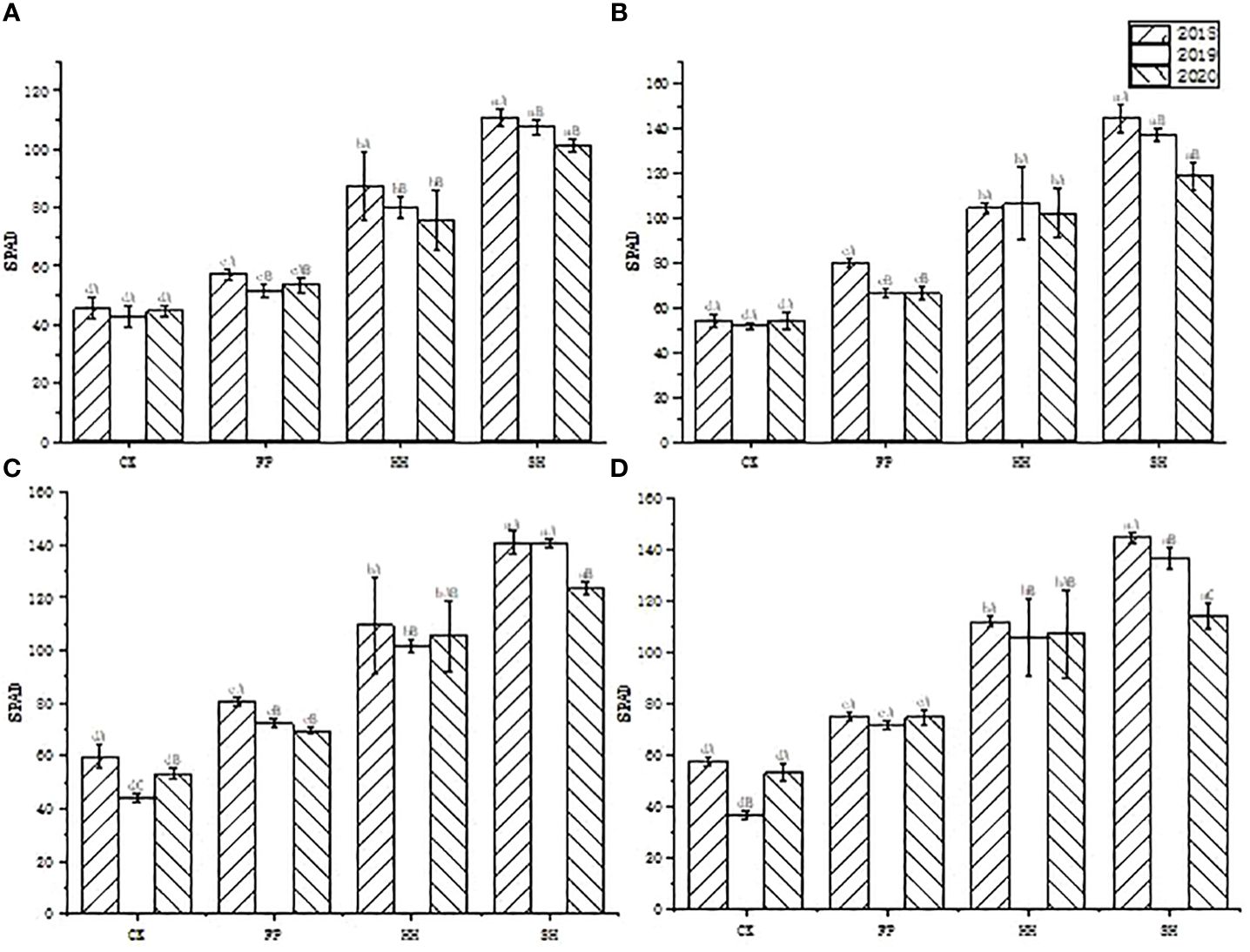
Figure 2. SPAD of maize under different cultivation modes. (A) seedling stage, (B) jointing stage, (C) silking stage, (D) filling stage. CK, base level; FP, farmer’s level; HH, high yield and high efficiency; SH, super high yield. Different lowercase letters indicate that the different cultivation is significantly different among materials (P<0.05), different capital letters indicate that the different year is significantly different among materials (P<0.05). The error bar represents the standard error of the average of the sample.
3.4 Effect of different cultivation modes on Pn
The Pn of maize in seedling stage, jointing stage, silking stage, and filling stage different significantly among different cultivation modes. The Pn order of the different cultivation modes was SH > HH > FP > CK, and the data of the 3-year field trial showed the same trends in different stage. During the three years, the Pn of SH, HH and FP cultivation modes was on an average 15.26%, 18.71% and 29.86% in seedling stage (Figure 3A), 7.54%, 18.46% and 22.89% in jointing stage (Figure 3B), 15.47%, 22.48% and 22.89% in silking stage (Figure 3C) and 25.31%, 29.79% and 35.27% in filling stage (Figure 3D) greater than CK cultivation mode. The average Pn in 2019 were higher by 14.33% and 21.07% than in 2018 and 2020.
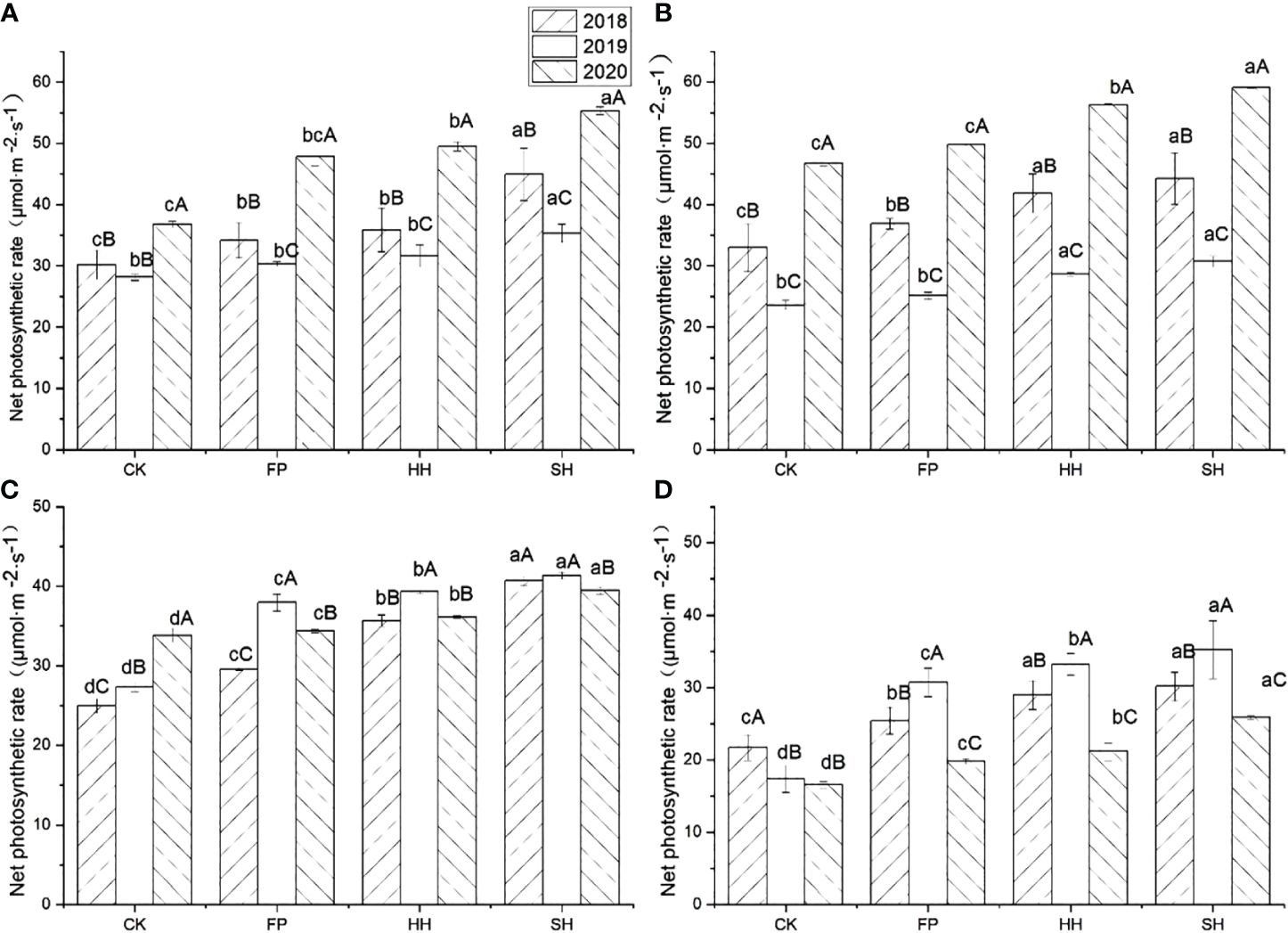
Figure 3. Pn of maize under different cultivation modes. (A) seedling stage, (B) jointing stage, (C) silking stage, (D) filling stage. CK, base level; FP, farmer’s level; HH, high yield and high efficiency; SH, super high yield. Different lowercase letters indicate that the different cultivation is significantly different among materials (P<0.05), different capital letters indicate that the different year is significantly different among materials (P<0.05). The error bar represents the standard error of the average of the sample.
3.5 Effect of different cultivation modes on LAI
The LAI of maize in seedling stage, jointing stage, silking stage different significantly among different cultivation modes. The LAI order of the different cultivation modes was SH > HH > FP > CK, and the data of the 3-year field trial showed the same trends in different stage. During the three years, the average LAI of SH, HH and FP cultivation modes increased by 59.77%, 77.01% and 82.83% in seedling stage (Figure 4A), 21.91%, 48.44% and 61.37% in jointing stage (Figure 4B), 18.16%, 47.47% and 61.33% in silking stage (Figure 4C) compared with CK cultivation mode. The average LAI in 2020 were higher by14.33% and 21.07% than in 2019 and 2020.
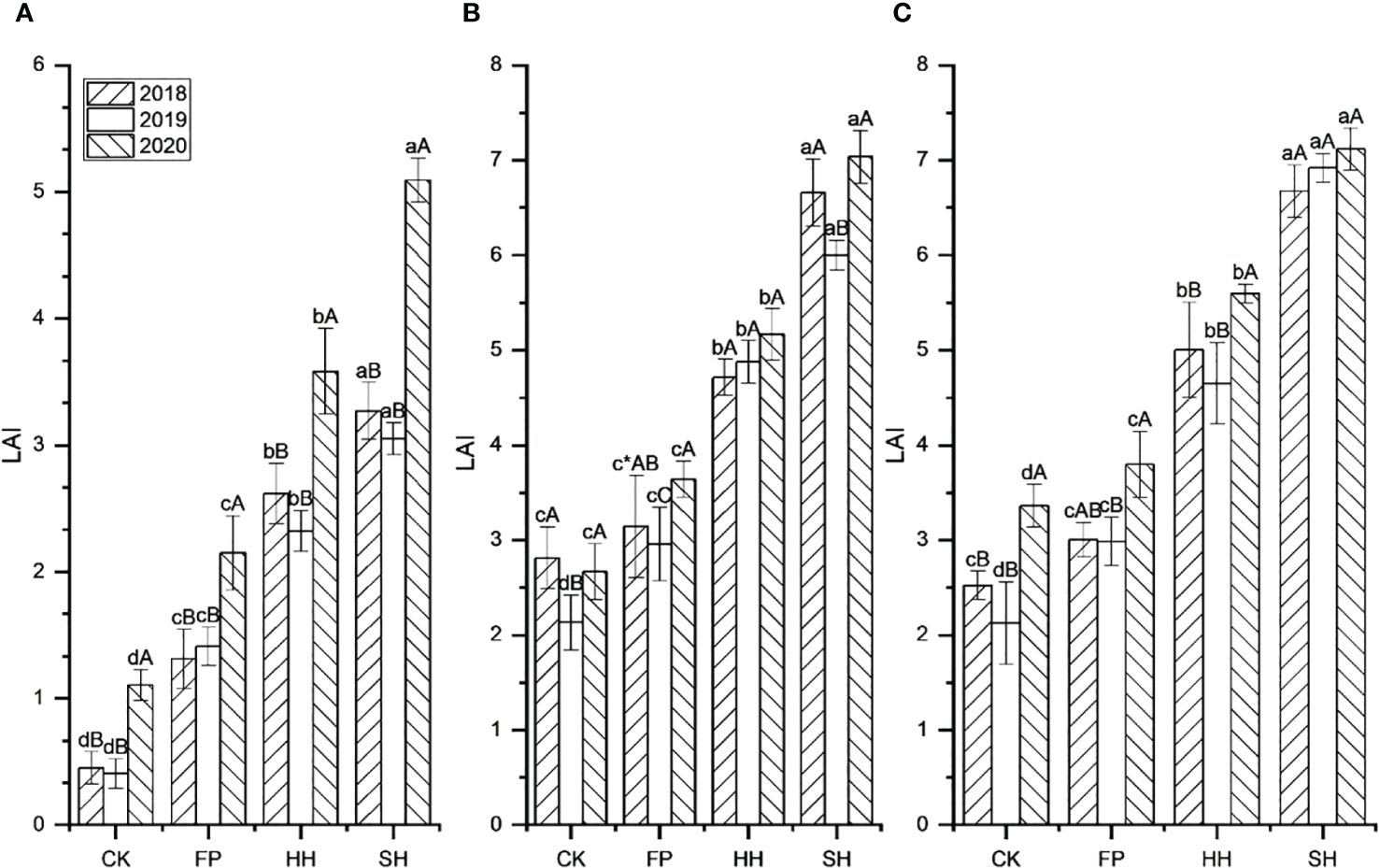
Figure 4. LAI of maize under different cultivation modes. (A) seedling stage, (B) jointing stage, (C) silking stage. CK, base level; FP, farmer’s level; HH, high yield and high efficiency; SH, super high yield. Different lowercase letters indicate that the different cultivation is significantly different among materials (P<0.05), different capital letters indicate that the different year is significantly different among materials (P<0.05). The error bar represents the standard error of the average of the sample.
3.6 Effect of different cultivation mode on root index
The root index of different cultivation modes were different (Figure 5). SH cultivation mode significantly enhances maize root length (Figure 5A), root diameter (Figure 5B), number of root tips(Figure 5C) and root surface (Figure 5D) area with a 71.10%, 10.75%, 61.79% and 51.70% higher root length than that of CK cultivation mode. Root length was higher 0.44% and 8.34% in 2020 than that of 2018 and 2019, root diameter, number of root tips, root surface area were significantly higher 14.69%, 25.87%, 46.06% and 8.92%, 10.45%, 22.18% in 2018 than that of 2019 and 2020.
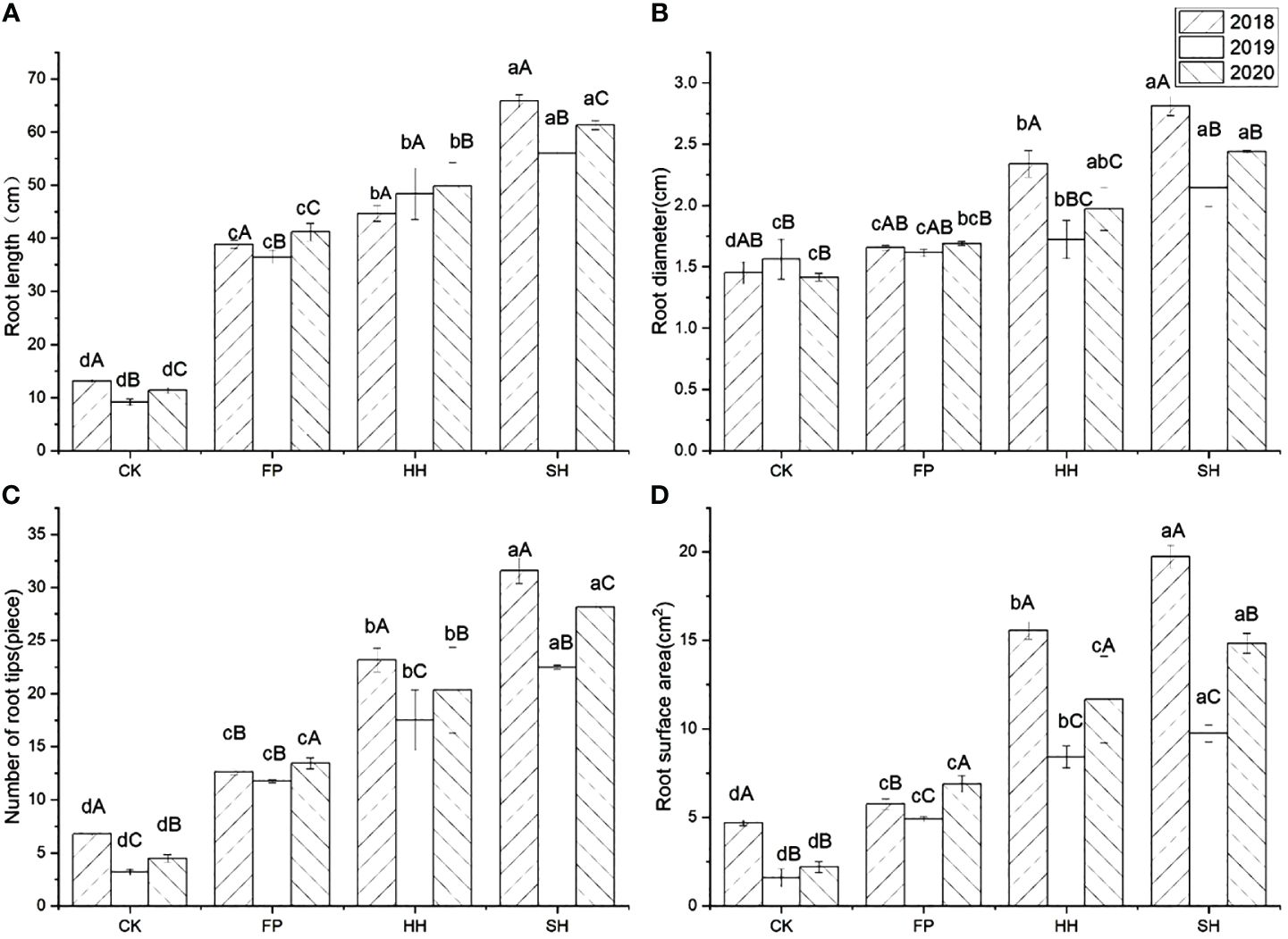
Figure 5. Root index of maize under different cultivation modes. (A) root length, (B) root diameter, (C) number of root tips, (D) root surface area. CK, base level; FP, farmer’s level; HH, high yield and high efficiency; SH, super high yield. Different lowercase letters indicate that the different cultivation is significantly different among materials (P<0.05), different capital letters indicate that the different year is significantly different among materials (P<0.05). The error bar represents the standard error of the average of the sample.
3.7 Correlation analysis of yield with WUE, Pn, SPAD, LAI and root index
There was a highly significantly positive correlation between yield and WUE, Pn in silking and filling stage, LAI, SPAD value and root index, but was not correlated with Pn in seedling and jointing stage (Table 3). The highly significantly positive correlation was detected between WUE and Pn in silking and filling stage, LAI, SPAD value and root index. Significantly positive relationship between WUE and Pn in seedling and jointing stage.
4 Discussion
4.1 Effect of different cultivation modes on yield and WUE in maize
In Li Shangzhong’s study, an analysis was conducted on the maize yield and WUE of various film cover cultivation modes. The findings revealed that the full-film double-row furrow cultivation mode exhibited a significant increase of 21.9% and 31.3% in yield and WUE, when compared with the open field cultivation mode (Li et al., 2020). The cultivation mode had a significant impact on the yield and nutrient use efficiency of dryland spring maize (Zhu, 2009). This trend was similar with the results of Lal and Stewart and Zhong et al. for the same region. However, the WUE-yield relationship was quadratic when the full range of yield was considered (Zhong and Shangguan, 2014). The optimization of cultivation modes or the implementation of integrated agronomic measures has been found to have a significant impact on crop yield improvement (Jin, 2013). Our results demonstrates that the SH, HH modes exhibited superior yields, as evidenced by significantly higher of yield and WUE compared to the FP and CK cultivation modes.
4.2 Effect of different cultivation modes on photosynthetic parameters in maize
The main place of plant photosynthesis is the leaf, which directly affects plant absorption and light energy utilization. LAI is an important indicator reflecting plant growth, development and light energy utilization, and maize should maintain a high LAI to achieve high yields (Zhang et al., 2011). Liu et al. found that LAI with the A3 treatment increased at the early growth stage (tillering) compared with A0 but decreased in subsequent growth stages and became lower than A0 at maturity. This may be due to the fast consumption of soil N by straw decomposition mediated by microbes and crop growth at early growth stages, resulting in insufficient nutrient supplies for subsequent growth (Liu et al., 2023. Cai et al., 1986). The application of CRF treatment resulted in a significant improvement in leaf chlorophyll content, delayed the reduction in chlorophyll levels in the leaf, enhanced the Leaf Area Index (LAI), and increased the maximum Pn during the pod-filling and mature stages of peanut growth (Liu et al., 2019). Nitrogen fertilizer transport can effectively regulate root growth, SPAD value is the result of the integrated effect of multiple factors (Zhuang et al., 2013). The previous study showed that rational fertilization is conducive to increase the maize LAI, improve the leaf SPAD value, and enhance the Pn of maize after spatulation (Bian et al., 2008). Previous studies on maize yield, LAI and SPAD value under different cultivation modes found that the LAI and SPAD of the super-high yielding cultivation mode increased by 80.03% and 13.73%, compared with than that of the farmer mode in Tibetan areas of the Western Sichuan Plateau. Our results demonstrates that the super-high yield mode and high yield and efficient cultivation mode exhibited superior yields, as evidenced by significantly higher values of LAI, Pn and SPAD values compared to the FP and CK cultivation modes. LAI, Pn and SPAD values of increase is due to the increase in rain, and the need for later compound synthesis. Furthermore, the SH and HH cultivation modes demonstrated a longer duration period of LAI, Pn and SPAD values.
4.3 Effect of different cultivation modes on root index in maize
The relationship between the size of the crop root system and crop yield is significant. A robust root system plays a crucial role in providing adequate nutrients and water for the growth and development of corn, thereby facilitating the realization of its high yield potential. Researchers have observed a noteworthy positive correlation between indicators such as root dry weight, root length, root surface area, and crop yield (Table 6). The root development of summer maize is subject to alterations in response to variations in soil conditions and cultivation practices, whereby tillage technique, sowing depth, planting density, and fertilizer conveyance all exert notable impacts on root growth (Guan et al., 2014; Wang et al., 2014; Cao et al., 2015). The growth and development of the root system were significantly influenced by planting density. As density increased, the growth space for the maize root system decreased (Chen et al., 2017). The findings of this study demonstrate that the cultivation modes of SH and HH cultivation modes resulted in significantly higher root length, root surface area, root tip number, and root diameter compared to FP and CK cultivation modes. These results indicate that SH and HH cultivation modes effectively enhance the growth and development of maize root systems, leading to improved root system absorption performance. Therefore, given the prevailing circumstance of diminishing agricultural land, altering the cultivation mode emerges as the primary determinant for augmenting maize yield. Specifically, enhancing fertility, strategically planning planting density, and implementing mulching techniques are crucial in elevating maize yield in the northern region.
5 Conclusion
The results demonstrate that the super-high yield (SH) cultivation mode significantly outperformed the farmer mode (CK) in terms of yield, net photosynthetic rate, leaf area index, and SPAD values. This study showed that SH cultivation mode was a cultivation mode on the semiarid Loess Plateau. These findings suggest that enhancing the maize population through strategies such as increased planting density, appropriate fertilization, and mulching can effectively enhance maize yield and improve light and temperature utilization efficiency, ultimately leading to higher maize productivity and efficiency.
Data availability statement
The original contributions presented in the study are included in the article/supplementary materials, further inquiries can be directed to the corresponding author.
Author contributions
SW: Conceptualization, Investigation, Methodology, Software, Writing – original draft, Writing – review & editing. TF: Resources, Visualization, Writing – review & editing. GZha: Project administration, Formal analysis, Writing – review & editing. MM: Formal analysis, Writing – review & editing. KL: Formal analysis, Project administration, Writing – review & editing. SL: Methodology, Project administration, Data curation, Writing – review & editing. WC: Funding acquisition, Project administration, Writing – review & editing. YD: Project administration, Writing – review & editing. LW: Conceptualization, Data curation, Writing – review & editing. JZ: Data curation, Investigation, Writing – review & editing. GZho: Methodology, Validation, Writing – review & editing. XL: Project administration, Validation, Writing – review & editing. SN: Methodology, Writing – review & editing.
Funding
The author(s) declare financial support was received for the research, authorship, and/or publication of this article. This work was supported by the National Natural Science Foundation of Corn Industry Technology System of the Ministry of Agriculture (GARS-02-66).
Conflict of interest
The authors declare that the research was conducted in the absence of any commercial or financial relationships that could be construed as a potential conflict of interest.
Publisher’s note
All claims expressed in this article are solely those of the authors and do not necessarily represent those of their affiliated organizations, or those of the publisher, the editors and the reviewers. Any product that may be evaluated in this article, or claim that may be made by its manufacturer, is not guaranteed or endorsed by the publisher.
References
Aggarwal P., Goswami B. (2003). Bed planting system for increasing water use efficiency of wheat grown on in ceptisol. Indian J. Agriculture. Scientific. 73, 422–425.
Aggarwal P., Sharma N. K. (2002). Water uptake and yield of rain fed wheat in relation to tillage and mulch. Indian J. Soil Conserv. 30, 155–160.
Benjamin J. G., Nielsen D. C. (2006). Water deficit effects on root distribution of soy-bean field pea and chickpea. Field Crops Resecher. 97, 248–253. doi: 10.1016/j.fcr.2005.10.005
Bian X. Z., Gai J. H., Guo J. R. (2008). Biological effects of phosphorus fertilizer application on maize. J. Maize Sci. 16, 120–122. doi: 10.13597/j.cnki.maize.science
Cai G., Zhu Z., Trevitt A. (1986). Nitrogen loss from ammonium bicarbonate and urea fertilizers applied to flooded rice. Fertil Res. 0, 203–215. doi: 10.1007/BF01049350
Cao H. Y., Shi J. G., Zhu K. L. (2015). Effects of sowing depth on seedling traits and root characteristics of summer maize. Chin. J. Appl. Ecol. 26, 2397–2404. doi: 10.13287/j.1001-9332.20150521.015
Chen Z. J., Sun S. J., Zhang X. D. (2017). Effect of planting density and film mulching soil moisture and root growth of maize fieldin rain-fed region of north-eastern China. J. Soil Water Conserv. 31, 714. doi: 10.13870/j.cnki.stbcxb
Guan D., Al-Kaisi M. M., Zhang Y. (2014). Tillage practices affect biomass and grain yield through regulating root growth, root-bleeding sap and nutrients uptake in summer maize. Field Crops Res. 157, 89–97. doi: 10.1016/j.fcr
Jia Q. M., Sun L. F., Mou H. Y. (2018). Effects of planting patterns and sowing densities on grain-filling, radiation use efficiency and yield of maize (Zea mays L.) in semi-arid regions. Agricultiral Water Manager. 201, 287–298. doi: 10.1016/j.agwat.2017.11.025
Jin L. B. (2013). Effects of integrated agronomic management practices on grain yield and yitrogen efficiency of summer maize (Shandong Agricultural University). doi: 10.7666/d.Y2303855
Li S. Z., Fan T. L., Zhao H. (2020). Effects of different plastic film mulching cultivation models on yield, water use efficiency and quality of maize. Acta Prataculturae Sinica. 29, 182–191. doi: 10.11686/cyxb2020073
Liu Z. X., Gao F., Yang J. Q. (2019). Photosynthetic characteristics and uptake and translocation of nitrogen in peanut in a wheat–peanut rotation system under different fertilizer management regimes. Front. Plant Science. 10. doi: 10.3389/fpls.2019.00086
Liu S. Q., Song F. B., Wang Y. (2007). Correlations between characters of roots and those of aerial parts of maize varieties. J. Jilin Agric. University. 29, 1–6. doi: 10.1327/j.jjlan
Liu W., Tang J. C., Zhang D. H. (2023). Improvement of straw decomposition and rice growth through co-application of straw-decomposing inoculants and ammonium nitrogen fertilizer. BMC Plant Biol. 23, 244–254. doi: 10.1186/s12870–023-04254–3
Qi W. Z., Liu H. H., Li G. (2012). Temporal and spatial distribution characteristics of super-high-yield summer maize root. Plant Nutr. Fertilizer Science. 18, 69–76.
Qi D. L., Wu X., Hu T. T. (2014). Effects of nitrogen supply methods on root growth, yield and nitrogen use of maize. Scientia Agricultura Sinica. 47, 2804–2813.
Queenta N. N., Olubukola O. B., Mulunda M. (2022). Aflatoxins in maize: can their occurrence be effectively managed in Africa in the face of climate change and food insecurity. Toxins (Basel) 14, 574–584. doi: 10.3390/toxins14080574
Ramadan S. M., Rui W., El-Sayed M. S. G., Hafiz A. H., Saddam H., Muhammad I., et al. (2021). Effects of salicylic acid, zinc and glycine betaine on morpho-physiological growth and yield of maize under drought stress. Sci. Rep. 11, 3195–3203. doi: 10.1038/s41598–021-82264–7
Raza M. A., Cui L., Khan I. (2021). Compact maize canopy improves radiation use efficiency and grain yield of maize/soybean relay intercropping system. Environ. Sci. Pollut. Res. 28, 41135–41148. doi: 10.1007/s11356–021-13541–1
Ren H., Cheng Y., Liu P. (2017). Effects of different cultivation patterns on root characteristics, yield formation and nitrogen utilization of summer maize. Scientia Agricultura Sinica. 50, 2270–2281.
Schulze E. -D., Mooney H. A., Sala O. E., Jobbagy E., Buchmann N., Bauer G. (1996). Rooting depth, water availability, and vegetation cover along an aridity gradient in Patagonia. Oecologia. 108, 503–511. doi: 10.1007/BF00333727
Wang X. B., Hou H. P., Zhou B. Y. (2014). Effect of strip subsoiling on population root spatial distribution of maize under different planting densities. Acta Agronomica Sinica. 40, 2136–2148. doi: 10.3724/SP.J.1006
Wang Y. Y., Meng G. X., Su Y. H. (2020). Effects of cultivation patterns on root growth and yield formation of spring maize. J. Maize Sci., 1–17. Available online at: http://kns.cnki.net/kcms/detail/22.1201.S.20201028.1215.002.html.
Wu X., Chen Y. Q., Sui P. (2015). Effect of planting geometries on canopoy structure of spring maize under high-density condition in north china plain. Chin. J. Ecol. 34, 18–24. doi: 10.13292/j.1000-4890.2015.0004
Xu J. Z., Lv Y. P., Liu X. Y. (2019). A general non-rectangular hyperbola equation for photosynthetic light response curve of rice at various leaf ages. Sci. Rep. 9, 9099. doi: 10.1038/s41598–019-46248-y
Xu L. N., Yan Y., Mei P. P. (2020). Canopy light distribution and humidity analysis of different maize varieties. Acta Agriculturae Boreali-Sinica. 35, 106–112. doi: 10.7668/hbnxb.20191147
Xu J. Z., Zhang W. G. (2017). Menaquinone-7 production from maize meal hydrolysate by Bacillus isolates with diphenylamine and analogue resistance. J. Zhejiang University. 18, 462–473. doi: 10.1631/jzus.B1600127
Yuan Z., Ata-Ul-Karim S. T., Cao Q., Lu Z. (2016). Indicators for diagnosing nitrogen status of rice based on chlorophyll meter readings. Field Crops Res. 185, 12–20. doi: 10.1016/j.fcr.2015.10.003
Zhang J. J., Dang Y., Zhao G. (2023). Effect of no-tillage with film and stubble resides on nutrients, microbial populations and enzyme activity in dryland maize fields. Acta Prataculturae Sinica 29, 123–133. doi: 10.11686/cyxb2019403
Zhang Y. Q., Yang H. S., Gao J. L. (2011). Study on canopy structure and physiological characteristics of super-high yield spring maize. Scientia Agricultura Sinica. 44, 4367–4376.
Zhao G. (2022). Transcriptome analysis revealed the key genes and pathways involved in seed germination of maize tolerant to deep-sowing. Plants. 11, 359–371. doi: 10.3390/plants11030359
Zhong Y. Q. W., Shangguan Z. P. (2014). Water consumption characteristics and water use efficiency of winter wheat under long-term nitrogen fertilization regimes in northwest China. PloS One 9, e98850. doi: 10.1371/journal.pone.0098850
Zhu L. (2009). The Effects of Different Cultivation Practices on the Nutrient Accumulation and Efficiency of Spring Maize on the Loess Plateau (Northwest A&F University).
Zhuang W. W., Yang W. Y., Shao Y. L. (2013). Effect of nitrogen fertilizer application and seedlings per hole on root growth of rice. Hubei Agric. Sci. 2), 4–8. doi: 10.3969/j.issn.0439–8114
Keywords: maize, yield, water use efficiency, photosynthetic parameters, root index, semiarid Loess Plateau
Citation: Wang S, Fan T, Zhao G, Ma M, Lei K, Li S, Cheng W, Dang Y, Wang L, Zhang J, Zhou G, Li X and Ni S (2024) Effect of integrated fertilizer and plant density management on yield, root characteristic and photosynthetic parameters in maize on the semiarid Loess Plateau. Front. Agron. 6:1358127. doi: 10.3389/fagro.2024.1358127
Received: 19 December 2023; Accepted: 29 May 2024;
Published: 09 August 2024.
Edited by:
Danilo Scordia, University of Messina, ItalyReviewed by:
Amit Anil Shahane, Central Agricultural University, IndiaRehana Sardar, University of the Punjab, Pakistan
Joseph Onyango Gweyi, Kenyatta University, Kenya
Copyright © 2024 Wang, Fan, Zhao, Ma, Lei, Li, Cheng, Dang, Wang, Zhang, Zhou, Li and Ni. This is an open-access article distributed under the terms of the Creative Commons Attribution License (CC BY). The use, distribution or reproduction in other forums is permitted, provided the original author(s) and the copyright owner(s) are credited and that the original publication in this journal is cited, in accordance with accepted academic practice. No use, distribution or reproduction is permitted which does not comply with these terms.
*Correspondence: Tinglu Fan, ZmFudGluZ2x1MzM5NEAxNjMuY29t
 Shuying Wang
Shuying Wang Tinglu Fan
Tinglu Fan Gang Zhao1,2,3,4
Gang Zhao1,2,3,4